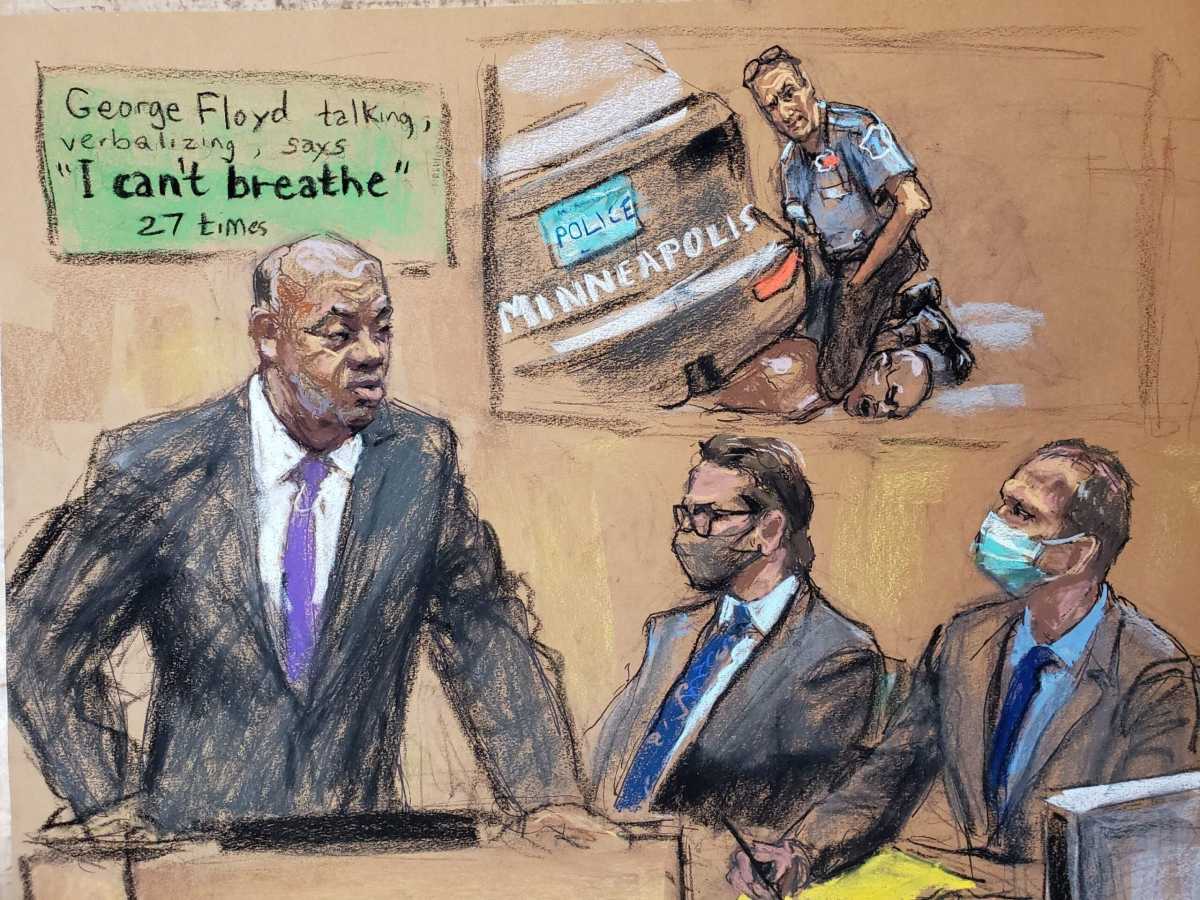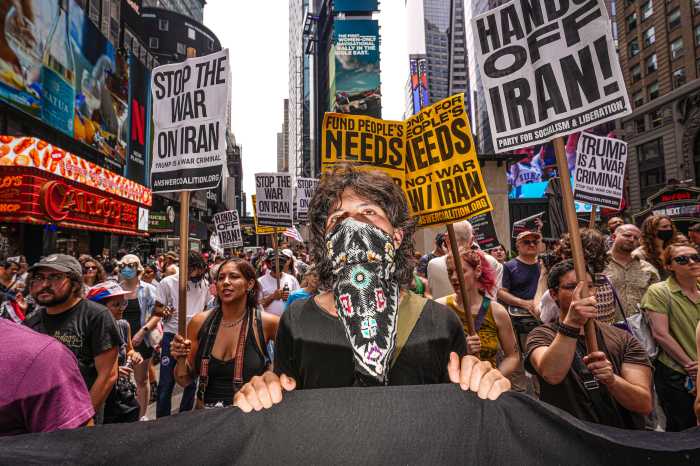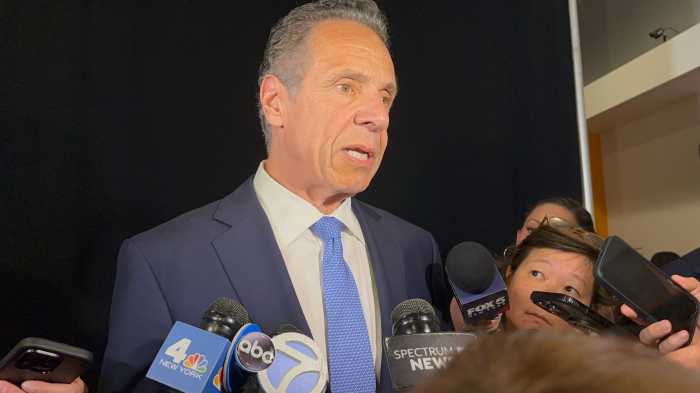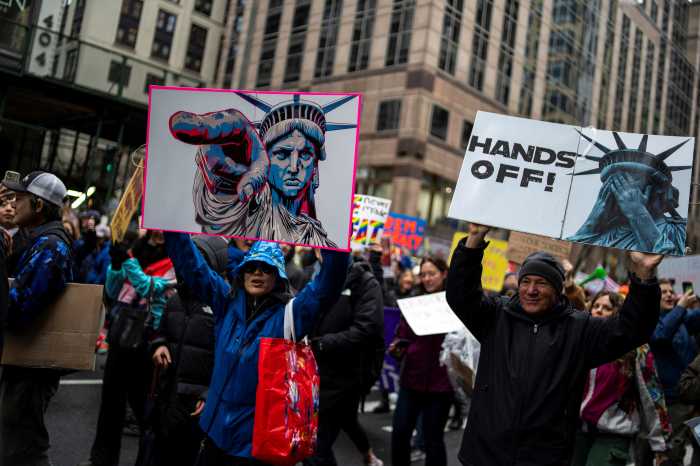Former Minneapolis policeman Derek Chauvin squeezed the life out of George Floyd while joining other officers in arresting him last May, a prosecutor told jurors in his opening statement at Chauvin’s murder trial in a heavily fortified courthouse on Monday.
The deadly arrest was captured on bystanders’ cellphones, surveillance cameras and police body-worn cameras, sparking global protests against racial injustice, and footage from at least two different angles was played for jurors.
Chauvin’s lead attorney, Eric Nelson, said in his opening statement that the videos forming the heart of the prosecutions’ case showed the former officer followed his police training.
But before him, Jerry Blackwell, a prosecutor with the Minnesota attorney general’s office, told the racially diverse jurors that officers who wear the Minneapolis police badge pledge to never use “unnecessary force or violence.”
“You will learn that on May 25, Mr. Derek Chauvin betrayed this badge when he used excessive and unreasonable force upon the body of George Floyd,” said Blackwell, who addressed the jury for just shy of an hour.
He displayed a still image from a bystander’s cellphone video of Chauvin, who his white, with his knee on the neck of Floyd, a 46-year-old Black man in handcuffs, saying it showed Chauvin “grinding and crushing him until the very breath — no, ladies and gentlemen — the very life was squeezed out of him.”
In the preceding two weeks of jury selection, many jurors told Hennepin County District Judge Peter Cahill and the lawyers on each side that they recognized the scrutiny their deliberations would come under, not least by those who view the trial as a reckoning for how Black people are policed in the United States.
“It’s been a long time coming,” a gospel choir sang on Sunday evening at a euphoric prayer service attended by Floyd’s relatives at a church a few blocks east of the deadly arrest. “But I know a change is gonna come.”
Philonise Floyd, a brother of George Floyd, said before the service began that he had faith that Chauvin would be convicted.
“The video is the proof,” he said.
‘NOT ATTRACTIVE BUT NECESSARY’ FORCE
Prosecutors played the most widely seen bystander video to jurors on Monday in the courtroom, near the top floor of a tower in downtown Minneapolis ringed with high barriers, barbed wire and soldiers from the state’s National Guard. Small groups of protesters decrying police brutality blocked traffic at times in the surrounding streets.
Chauvin, dressed in a gray suit, a blue face mask and a blue shirt and tie, took pages of notes on a yellow legal pad as the dying moans of Floyd and the yelling of horrified onlookers filled the courtroom. One could be heard repeatedly shouting at Chauvin that he was a “bum” and demanding police check Floyd’s pulse as Floyd motionless.
Chauvin, 45, has pleaded not guilty to second-degree murder, third-degree murder and second-degree manslaughter, with his lawyers arguing that the main cause of Floyd’s death, which the county examiner ruled a homicide caused by police restraints, was a drug overdose. He faces up to 40 years in prison if convicted on the most serious charge. The Minneapolis Police Department fired Chauvin and the three other officers involved the day after the arrest.
Defense lawyer Nelson used his 25-minute opening statement to describe Floyd’s drug use, his underlying health problems and a chaotic scene during the arrest.
“This was not an easy struggle,” he said, adding that the screaming of bystanders ended up “causing the officers to divert their attention from the care of Mr. Floyd.”
“Derek Chauvin did exactly what he was trained to do over the course of his 19 year career,” Nelson told the jury. “The use of force is not attractive but it is a necessary component of policing.”
Prosecutors warned the jury to ignore defense arguments that Floyd’s death was caused by an opioid overdose. Blackwell drooped his head and shut his eyes, feigning a stupor, telling the jury that someone overdosing on fentanyl would not be unconscious and not “screaming for their mother.”
“That’s not what an opioid overdose looks like,” he said.
The first witness called by the prosecutors was Jena Scurry, a Minneapolis 911 emergency dispatcher who sent police to the Cup Foods store and watched live surveillance video footage showing a police car rock back and forth outside the store as four officers struggled to get Floyd to stay in the back seat.
She said she watched the video, which was played to jurors, with growing alarm.
“I first asked if the screen had frozen,” she said. Each time she looked up, she testified, the officers were still on top of Floyd.
“My instinct is telling me something is wrong,” said Scurry, who called a supervising police sergeant. Jurors heard her say she did not mean to be a “snitch” but she wondered if the officers needed more help.
Updated at 3:21 p.m.



































